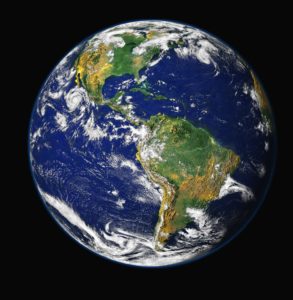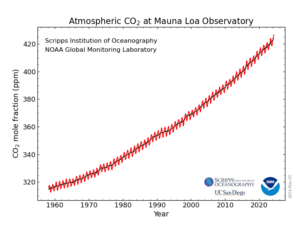 It shouldn't be a surprise to read that carbon dioxide levels in the atmosphere are surging and accumulating faster than ever. In May, it surged to 427 parts per million (426.90 ppm) - while in 1960 it was about 320 ppm. It's depressing, and it doesn't bode well for our future.
It shouldn't be a surprise to read that carbon dioxide levels in the atmosphere are surging and accumulating faster than ever. In May, it surged to 427 parts per million (426.90 ppm) - while in 1960 it was about 320 ppm. It's depressing, and it doesn't bode well for our future.
These high levels of carbon dioxide are a major driver of the record-setting heat we've been experiencing in recent years. Carbon dioxide is the gas that accounts for the majority of global warming (yes, climate change) and is caused by human activities. The human activities are burning of fossil fuels, such as gas and oil - in vehicles, coal-fired plants, large industrial operations, ships, airplanes, rockets.

Excerpts from NOAA (National Oceanic and Atmospheric Administration): During a year of extremes, carbon dioxide levels surge faster than ever
Carbon dioxide is accumulating in the atmosphere faster than ever — accelerating on a steep rise to levels far above any experienced during human existence, scientists from NOAA and the Scripps Institution of Oceanography offsite link at the University of California San Diego announced today.
